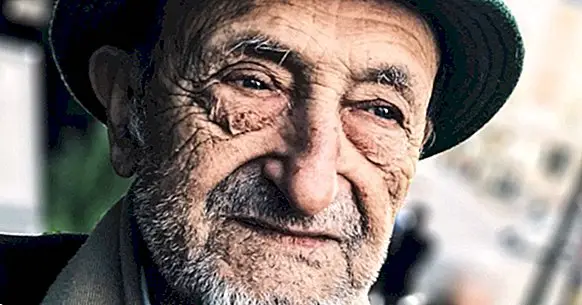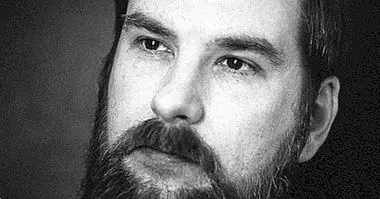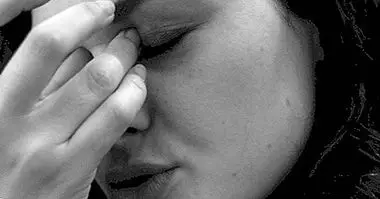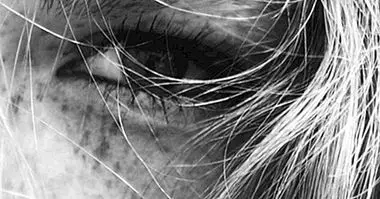Neurodegenerative diseases: types, symptoms and treatments
Let's think about the disease that gives us the most fear. Probably, some people will have imagined cancer or AIDS, but many others will have chosen Alzheimer's, or another disorder in which there is a progressive loss of abilities (especially mental, but also physical). And is that the idea of losing our abilities (not being able to remember, not being able to move, not knowing who we are or where we are) is part of the deepest nightmares and fears of many.
Unfortunately, for some people it is more than a fear: it is something that they are living or that they expect to live in the near future. It's about people suffering from neurodegenerative diseases , a concept that we are going to talk about throughout this article.
- Maybe you're interested: "The 15 most frequent neurological disorders"
What are neurodegenerative diseases?
We understand neurodegenerative diseases as the set of diseases and disorders characterized by the presence of neurodegeneration, that is, the progressive degradation until the death of neurons that are part of our nervous system.
This neuronal death usually tends to be progressive and irreversible, causing a series of effects or repercussions of varying severity that can range from not having a symptomatic effect to provoking the progressive loss of mental and / or physical faculties and even leading to death (for example, due to cardiorespiratory arrest, one of the most frequent causes of death in this type of condition).
Neurodegenerative diseases are one of the most frequent and relevant causes of disability, since progressive neurodegeneration will end up causing the limitation of functions and the progressive inability to cope with environmental demands, requiring external support and different degrees of help .
Possible causes
The causes of this type of disorders or diseases can be multiple, there being a large number of factors that can influence its appearance. The origin in question will depend to a great extent on the neurodegenerative disease of which we are speaking. However in most cases the specific causes of the appearance of these pathologies are unknown.
Among the multiple possible causes that are suspected for some of them that do know, some causes are found in viral diseases not yet curable that affect the nervous system, the presence of alterations in the autoimmune system that generate that attack the cells of the body. body, traumatisms and / or cerebrovascular accidents (in the case of vascular dementia). There is also an excess of some elements such as Lewy bodies, beta-amyloid plaques or neurofibrillary tangles in some dementias, although the reason for their appearance is not known.
Types of most frequent neurodegenerative diseases
There are a lot of diseases and disorders that can cause the degeneration and subsequent death of neurons in our nervous system. Dementias and neuromuscular diseases are usually the most known and frequent. Below we can see some examples of some of the most common neurodegenerative diseases.
1. Alzheimer's disease
One of the most well-known neurodegenerative diseases is Alzheimer's disease, perhaps the most prototypical and prevalent problem of this type. This disease, which starts in the temporoparietal lobes and later spreads throughout the brain, does not have a clear known cause. Generates a dementia characterized by the progressive loss of mental faculties, with memory being one of the most affected elements and aphaso-apraxo-agnósico syndrome appears in which the abilities of speech, sequencing and realization of complex movements and the recognition of stimuli as faces are lost.
- Maybe you're interested: "Alzheimer's: causes, symptoms, treatment and prevention"
2. Parkinson's disease
Parkinson's is another of the most well-known and frequent neurodegenerative diseases. In her a progressive degeneration of the neurons of the substantia nigra occurs and the nigrostriado system, affecting the production and use of dopamine in said way. The most recognizable symptoms are those of the motor type, with slowing down, gait alterations and perhaps the most well-known symptom: parkinsonian tremors in rest situations.
It may end up generating a dementia , in which in addition to the above symptoms can be observed mutism, loss of facial expression, mental slowness, memory alterations and other alterations.
3. Multiple Sclerosis
Chronic and currently incurable disease generated by the progressive demyelination of the nervous system due to the reaction of the immune system against the myelin that lines the neurons . It passes in the form of outbreaks between which there may be a certain level of recovery, as the body tries to repair the loss of myelin (although the new one will be less resistant and effective). Fatigue, muscle weakness, lack of coordination, visual problems and pain are some of the problems it causes, usually progressing in intensity over time. It is not considered deadly and has no great effect on life expectancy.
- Maybe you're interested: "Multiple sclerosis: types, symptoms and possible causes"
4. Amyotrophic Lateral Sclerosis
Amyotrophic lateral sclerosis is one of the most frequent neuromuscular disorders, being one of the neurodegenerative diseases linked to the alteration and death of motor neurons. As the neurodegeneration progresses, the musculature will atrophy until its voluntary movement becomes impossible. Over time it can affect the respiratory musculature , being one of the causes that the life expectancy of those who suffer it is reduced to a great extent (although there are exceptions, such as Stephen Hawking).
5. Huntington's Korea
The disease known as Huntington's chorea is one of the best known neurodegenerative diseases of genetic cause . Hereditary disease transmitted in an autosomal dominant manner, is characterized by the presence of motor alterations, such as choreas or movements generated by the involuntary contraction of muscles, its displacement being somewhat similar to a dance. In addition to motor symptoms, as the disease progresses, alterations appear in executive functions, memory, speech and even personality.
The presence of important brain lesions is observed throughout its development, especially in the basal ganglia. It usually has a poor prognosis, greatly reducing the life expectancy of those who suffer from it and facilitating the presence of cardiac and respiratory disorders.
- Related article: "Huntington's Korea: causes, symptoms, phases and treatment"
6. Friedreich's ataxia
Hereditary disease that alters the nervous system through the involvement of the neurons of the marrow and the nerves that control the extremities. The most visible difficulty is to coordinate movements, muscle weakness , difficulties in speaking and walking and eye movement problems. The progression of this disease usually causes those affected to need assistance and the use of wheelchairs. It frequently occurs accompanied by heart problems.
Treatment of neurodegenerative diseases
Most of the neurodegenerative diseases are currently incurable (although there are exceptions, since in some cases caused by infections the infectious agent could be eliminated). However, there are treatments that aim to slow the progression of these diseases and prolong the autonomy and functionality of the patient. Depending on the specific case, different medical-surgical procedures can be used that can alleviate the symptomatology of the disorder or different medications that prolong the functionality of the subject.
First, we must bear in mind that the same diagnosis will be a serious blow to the patient, generating a probable period of grief and adaptive problems derived from it. It is likely that anxiety and depression appear, and even acute or post-traumatic stress disorder depending on the case. In these cases the use of psychotherapy may be necessary , adapting the strategy to each specific case. And not only in the case of the patient, but caregivers can also experience this type of problems and require professional care.
Psychoeducation for both the patient and the environment Regarding the disease and its consequences, it is fundamental, helping to reduce the level of uncertainty that may arise and providing adaptation mechanisms and strategies.
The use of neuropsychological rehabilitation is usual , occupational therapy, physiotherapy and logotherapy as part of a multidisciplinary strategy to optimize and prolong the quality of life, the state, the capacities and autonomy of the patient. It also usually ends up being precise of the use of external aids that can be used as compensation or substitution of the lost abilities such as pictograms, agendas (something as simple as this can be of great help for people with problems of memory and planning for example), visual aids or displacement mechanisms such as adapted wheelchairs.
Bibliographic references
- World Health Organization (2006) Neurological disorders. Challenges for public health. WHO. 45-188.



















